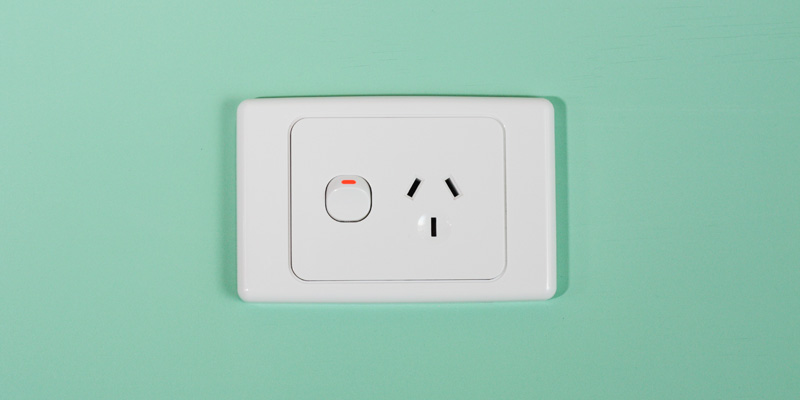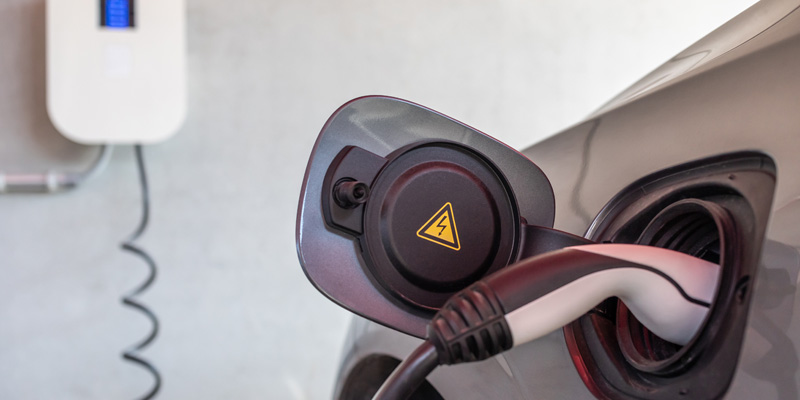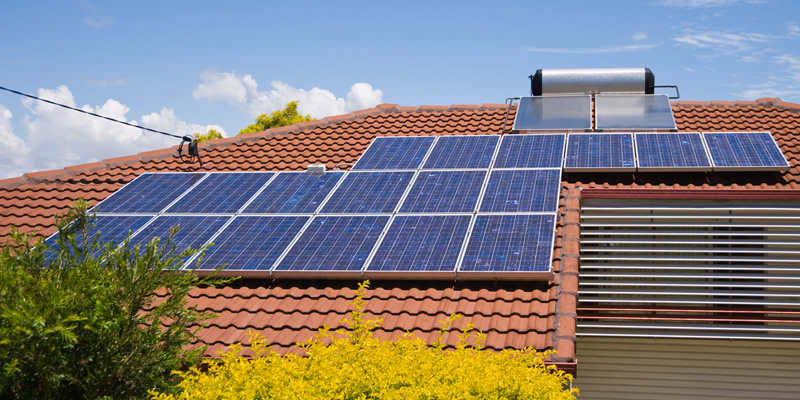


Driving an EV requires considering where, when and how to charge. By understanding the different types of home EV chargers available, and which is best for you, EV ownership can be made much more convenient and cost-effective.
Owners have a few options for charging their EV at home, with options varying in price, charging speed and difficulty of installation.
EV chargers are classed in one of four tiers, known as levels. These ascend as power output, price and complexity of installation increases. Level 1 and Level 2 are suitable for home charging, whereas Level 3 and 4 are generally only seen in public or commercial charging station applications.
Utilising a regular 240-volt wall socket and the charging cable supplied with an EV – referred to as electric vehicle standard equipment (EVSE) – Level 1 is the cheapest and simplest form of home EV charging.
Level 1 charging outputs between 2.4 to 3.7kW per hour at 10 to 15 amps (A), due to limitations of a standard home wall sockets.
This means a Level 1 charger operating at the upper end of the range (3.7kW) can charge an EV with a 37kWh battery pack from empty to full in approximately 11 hours at a typical charge rate. For reference, a Hyundai Kona Standard Range EV has a 39.2kWh capacity providing 305km of driving range.

Level 1 charging only requires one end of the EVSE to be plugged into a power outlet and the other into an EV, meaning Level 1 charging is portable and requires no modification to a home/accommodation venue. It’s as simple as that.
EVSE is included in an EV’s base price, meaning Level 1 charging only costs as much as the price of electricity consumed.
Please note: do not to use extension cords with EVSE. Extension cords are generally not suited to the sustained, high amperage conditions seen during Level 1 charging.
Moving up to Level 2 charging brings increased power outputs and reduced charging times, however cost and complexity of installation also rise sharply.
Dedicated wall charger hardware and circuitry is required for Level 2, so this charging tier is not the same plug ‘n’ play affair as Level 1.
Level 2 charging is further split into two sub-categories – single-phase and three-phase – with each requiring different wall chargers and modifications to home circuitry.
Considered a middle ground in terms of charging your EV at home, Level 2 single-phase provides a considerably increased power output and reduced charge times compared to using a wall socket (Level 1), while not requiring major modification to a home’s wiring to suit.
While Level 2 single-phase charging receives the same single-phase 240v AC electrical feed as Level 1, its dedicated wall box/wall charger system can operate at much higher amperages of about 32A.
As Level 2 single-phase wall chargers draw more current than a standard wall socket can provide, an electrician will need to be brought in to route a dedicated circuit/cable to the unit.
Many reputable brands offer Level 2 single-phase wall chargers in Australia on the lean side of $1250. However, labour cost for installation can vary depending on the design of your home, accessibility to wiring and other factors. An electrician’s quote is your only sure-fire way to know how much to budget.

Level 2 three-phase EV charging provides the highest power outputs of all AC charging options, however the privilege can come with a large price tag as most Australian residential properties do not have the required infrastructure.
The use of beefed-up wiring and wall charger allows a Level 2 three-phase charger to receive and output more than 400v. This increases charging output to a whopping 22kW – almost 10 times that of Level 1 charging.
While Level 2 three-phase wall chargers themselves do not cost a lot more than single-phase versions, coming in at about $1500–2200, the bulk of the expense to install one in your home will be an electrician’s labour charges.
Why is this? Most Australian residential properties are fed with single-phase AC, whereas three-phase AC is commonly reserved for commercial and industrial sites to operate heavy-duty machinery.
The cost to run three-phase wiring to a wall charger will depend on how far your property is from a three-phase connector on the electrical grid and whether power is supplied overhead or underground in your area.
As with Level 2 single-phase, your best bet is to get a quote from a qualified electrician.
| Level 1 EV charging | Level 2 single-phase EV charging | Level 2 three-phase EV charging | |
|---|---|---|---|
| Charge rate | 2.4 to 3.7kW | 7kW | 22kW |
| Range added per hour of charge* |
~16.9km (@ 2.4kW) |
~47.7km | ~154.8km |
| Empty to full charging time* | ~18h 4m (@ 2.4kW) | ~6h 12m | ~1h 59m |
| Installation requirements |
|
|
|
*Estimate based on EV with 39kWh battery and 305km range
The time it takes to charge an EV depends on a few factors:
For instance, to calculate charging time for an EV with a 39kWh battery capacity using a Level 2 charger at a 7kW charge rate, we would use the below formula:
Charging an EV at home using solar energy is another way owners can save money and make running their EV even more environmentally friendly by using a renewable energy source. There are two main things those who want to power their EV with solar should consider:
Home solar setups commonly output between 5kW and a maximum of 10kW of AC.
Current or soon-to-be EV owners should factor in the energy demands of charging an EV when sizing a solar setup. If the combined energy requirements of a household and charging an EV exceed the output of your solar system, then grid energy will be used supplementarily.
For instance: if your home’s power usage during the day is 5kW, and your EV has a charge rate of 5kW, then a 10kW solar system will be sufficient to supply energy for both.

A solar panel array’s power output is its rated maximum, meaning in suboptimal conditions – such as overcast days – less energy will be produced, creating a larger reliance on the grid.
Owners who don't want to power their home or EV from the grid can purchase a ‘smart charger’, able to alternate between solar- and grid-supplied energy depending on conditions.
A smart charger can determine when a solar setup is producing more energy than a house is consuming and, when suitable, automatically direct the surplus energy into charging the EV.
When deciding what type of home EV charger is best for you, the most basic considerations should be how much driving you plan to do and the type of EV you own (or are planning to purchase). These two factors will determine your required charging kW.
Within reason, most EVs travel a similar distance per kWh of battery charge, meaning the equation becomes as simple as kilometres of range added per hour of charge.
For a new Hyundai Kona Long Range EV, with a 64kWh battery and claimed 484km driving range, this means each kWh of energy stored in the battery represents approximately 7.5km the vehicle can travel.
Considering the average Australian’s round trip work commute is 32km, an EV will consume about 4.5kWh to cover that distance. At even the slowest Level 1 charging, this energy can be transferred into the battery in around two hours, with a 10-hour overnight charge adding about 22kWh – or roughly 165km of range.
This charge speed is arguably acceptable for most daily commutes Australians make, however, at this rate, the Kona would also require approximately 29 hours for a full charge from empty. This makes Level 1 charging impractical for longer daily commutes or extended road trips without the aid of a faster charger.
While plug-in hybrids (PHEV) and battery electric vehicles (BEV) can both be charged via a plug and driven solely on electric power, their battery capacities vary greatly, so the type of EV you own becomes a consideration when choosing a home charger.
The new MG HS PHEV comes with a 16.6kWh battery pack which, despite being on the larger end for a PHEV, still only provides 63km of driving range – a far cry short of any BEV on the market.
For this reason, a PHEV generally does not justify anything beyond Level 1 charging, as the smaller battery pack these EVs use will reach full capacity in a relatively short time (the MG, for instance, taking about seven hours even at the slowest rate of Level 1 charging).
BEVs, with their larger battery packs, often justify the initial investment in a Level 2 charger given they rely solely on electricity to drive and take often impractical times to charge with Level 1 chargers.
Another thing to consider when choosing a home EV charging setup is if your electric car can make use of three-phase Level 2 charging.
EV battery packs store and discharge DC energy, with an onboard charger-inverter switching electricity from AC to DC before it enters the batteries. This inverter has a limit when it comes to the amount of AC power it can be fed and converted.
Put simply, your EV may not be able to charge at the full 22kW a Level 2 three-phase charger can provide, so it’s best to check this specification with the manufacturer before forking out money for a high-end charger your EV may not be able to fully utilise.